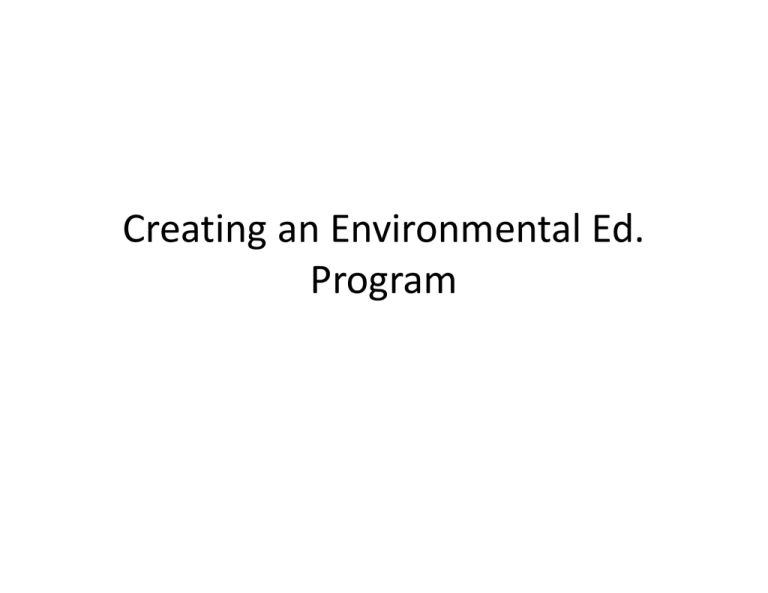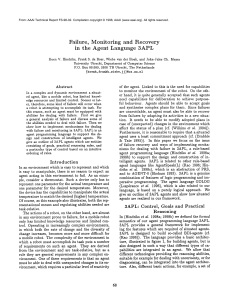Creating an Environmental Ed. Program
advertisement

Creating an Environmental Ed. Program Aleisha Miller Information & Education Specialist Promoting Your Program • Who do I contact? – Elementary School: Principal, G/T teacher, your child/grandchild’s teacher. – Middle/High School: Science teacher, Ag. Teacher – Scouts • How do I make contact? – Pamphlet – Teacher Lounge – Exceptional Programs promote themselves Developing an Environmental Program • Choose a program focus – Elementary, Middle, or High School – Topic – Help reach Academic Standards • A good program promotes itself. Volunteers • Staff • Local talent – The Sportsman who talks about skulls – The person who used to live at the park • Volunteer Stream Samplers • Family • Retired Teachers • Let people teach what they are comfortable with. Tricks/Tips for Teaching Outdoors Hands On! • Get wet! Get Dirty! Touch! Explore! • Tools enhance the experience • Be Patient – giving students time to really look at and explore things, it is hard for adults to wait. Plan • Know your site – – – – – Where are the neat things? Where could stations be placed? Safety Bathrooms/drinking water Walking distance • Prepare teachers and students – Clothing/Shoes • Event Planning Sheet Event Planning • Beyond who, what, where, when, why and how… • Theme • Objective • Learning Styles – Visual – Aural – Analytical – Kinesthetic Activity Selection • Are they hands on? • Are the students listening? – Non‐active stations can be a good place for students to recoop. • Will the students be moving a lot or noisy? – This is a distraction that can be avoided. Be Flexible • Busses are ALWAYS late • Groups get mixed up • Stations run late • Weather changes Attitude • The kids attitude will be a reflection of your attitude! Set Expectations • This is an outdoor classroom, not recess. • The same rules apply out here as in the classroom. • Example rules: – Speaking voices – not yelling – Walking – not running – Stay behind leader – No Picking/Pulling of nature Regaining Attention • Move next to the disruptor. • Touch the disruptor on the shoulder/head. • Move the disruptor to sit next to you. • Have the adult chaperone remove the disruptor. Outdoor Distractions • Don’t make the group face the sun • Remove sticks/rocks • Adult volunteers • Other stations Resources • WI DPI – WI Academic Standards • Responsive Classroom • The Jeffers Foundation • • • • Project Wild/Wild Aquatic/Wet/Learning Tree LEAF KEEP WEEB – WI Environmental Education Board • Water Action Volunteers Example Programs – Water Field Day • Water Bugs – Least Hands On: – Hands On: – Most Hands On: • Watershed Model – Least Hands On: – Hands On: • Water Cycle Game • Water Quality – Least Hands On: – Hands On: – Most Hands On: Example Programs – Water Field Day • Water Bugs – Least Hands On: – Hands On: – Most Hands On: Example Programs – Water Field Day • Water Quality – Least Hands On: – Hands On: – Most Hands On: Example Programs – Water Field Day • Watershed Model – Least Hands On: – Hands On: Example Programs – Water Field Day • Water Bugs – Least Hands On: – Hands On: – Most Hands On: • Watershed Model – Least Hands On: – Hands On: • Water Cycle Game • Water Quality – Least Hands On: – Hands On: – Most Hands On: If we want children to flourish, to become truly empowered, then let us allow them to love the earth before we ask them to save it. ~ David Sobel





